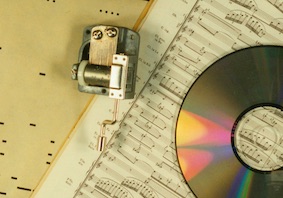From idea to acoustics and back again: the creation and analysis of information in music

Published 2018-03-26
Keywords
- information,
- music,
- composition,
- cognition,
- coding
How to Cite
Abstract
The information in musical signals – including recordings, written music, mechanical or electronic storage files and the signal in the auditory nerve – are compared as we trace the information chain that links the minds of composer, performer and listener. The (uncompressed) information content of music increases during stages such as theme, development, orchestration and performance. The analysis of performed music by the ear and brain of a listener may reverse the process: several stages of processing simplify or analyse the content in steps that resemble, in reverse, those used to produce the music. Musical signals have a low algorithmic entropy, and are thus readily compressed. For instance, pitch implies periodicity, which implies redundancy. Physiological analyses of these signals use these and other structures to produce relatively compact codings. At another level, the algorithms whereby themes are developed, harmonised and orchestrated by composers resemble, in reverse, the means whereby complete scores may be coded more compactly and thus understood and remembered. Features used to convey information in music (transients, spectra, pitch and timing) are also used to convey information in speech, which is unsurprising, given the shared hard- and soft-ware used in production and analysis. The coding, however, is different, which may give insight into the way music is understood and appreciated.





